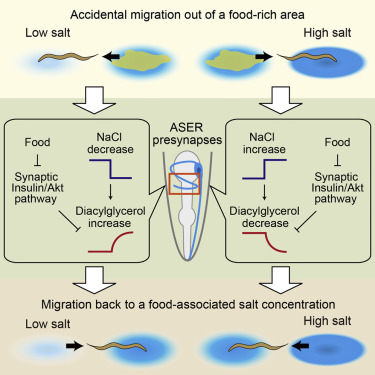Check out this paper, just published in Cell Reports, about measuring DAG at the synapse in sensory neurons:
Dynamics of Presynaptic Diacylglycerol in a Sensory Neuron Encode Differences between Past and Current Stimulus Intensity
H. Ohno, N. Sakai, T. Adachi, Y, Iino September 2017
Highlights
- Presynaptic DAG is monitored in a taste neuron of C. elegans
- Salt concentration shifts cause presynaptic DAG changes in fed worms
- DAG is modulated downstream of the synaptic insulin/PI3K/Akt pathway
- Presynaptic DAG dynamics are predictive of taste learning behavior
Summary
Memorizing the intensity of sensory stimuli enables animals to successfully deal with changing environmental conditions and contributes to cognitive functions such as auditory and visual working memory. However, how nervous systems process past and current stimulus intensity is largely unknown at the molecular level. Here, we employ in vivo diacylglycerol (DAG) imaging in the ASER taste neuron of Caenorhabditis elegans and demonstrate that associative learning between ambient salt concentrations and food can be explained by changes in presynaptic DAG. The abundance of DAG is regulated in response to external salt concentration changes via sensory transduction in ASER and can encode differences between past and current salt concentrations. The DAG dynamics are modulated downstream of the synaptic insulin/phosphatidylinositol 3-kinase (PI3K)/Akt pathway, which regulates the behavioral plasticity induced by starvation. These results provide insights into how a single neuron stores past input intensity and generates appropriate behavioral responses.
Ask us about Cre-dependent expression in Rosa26 mice!

